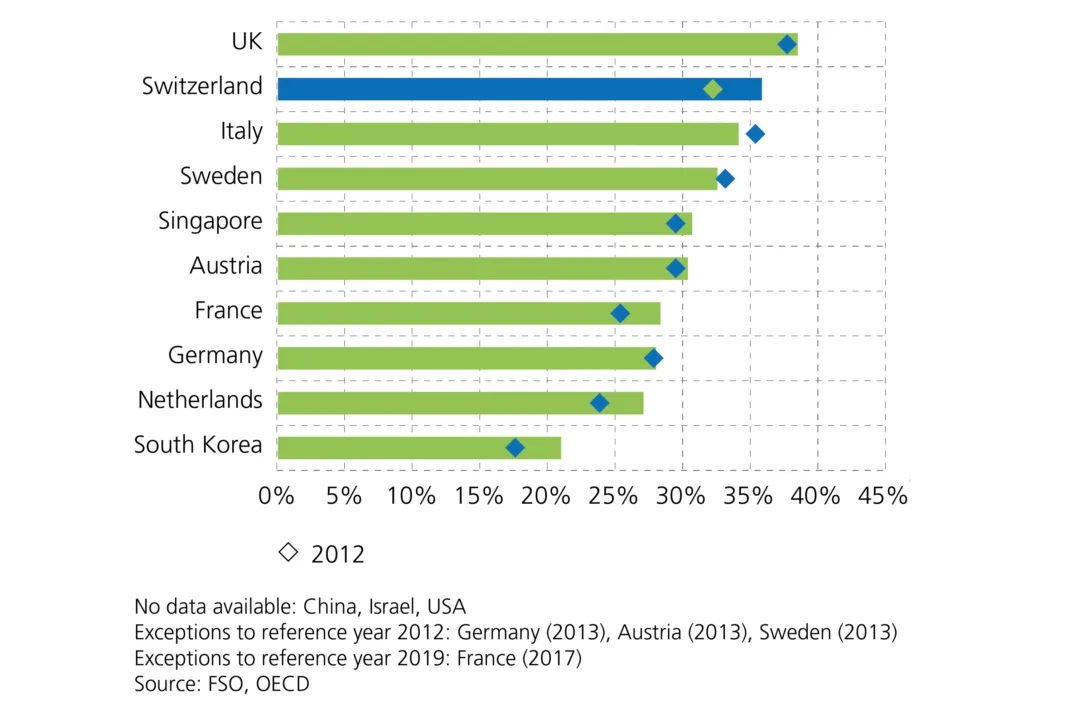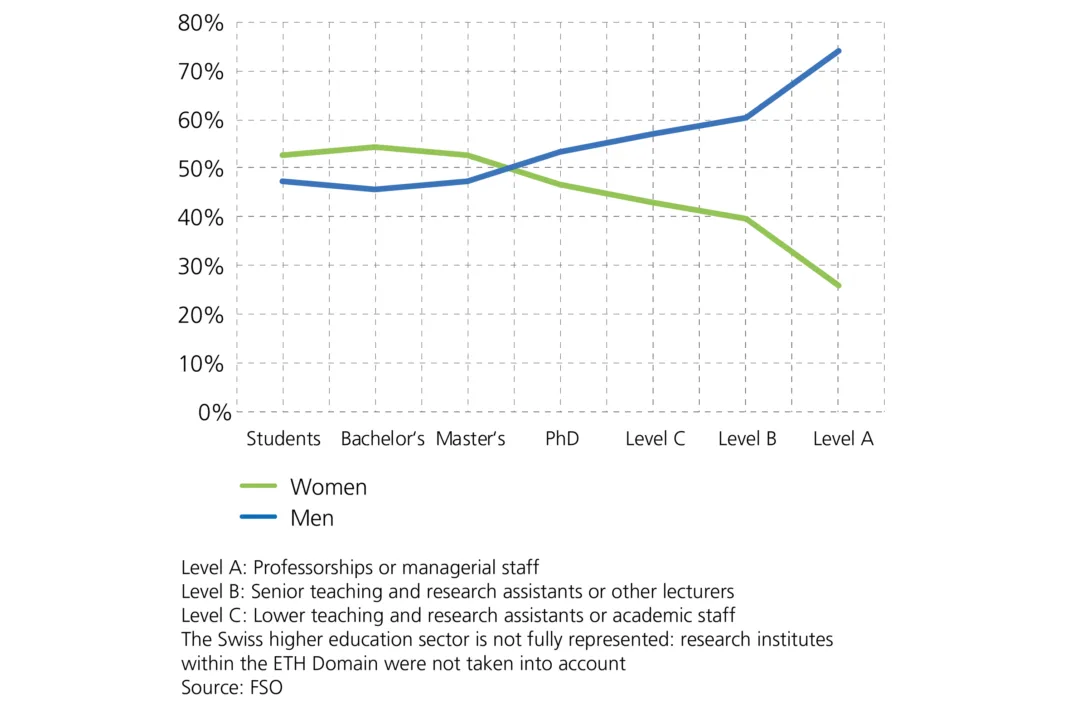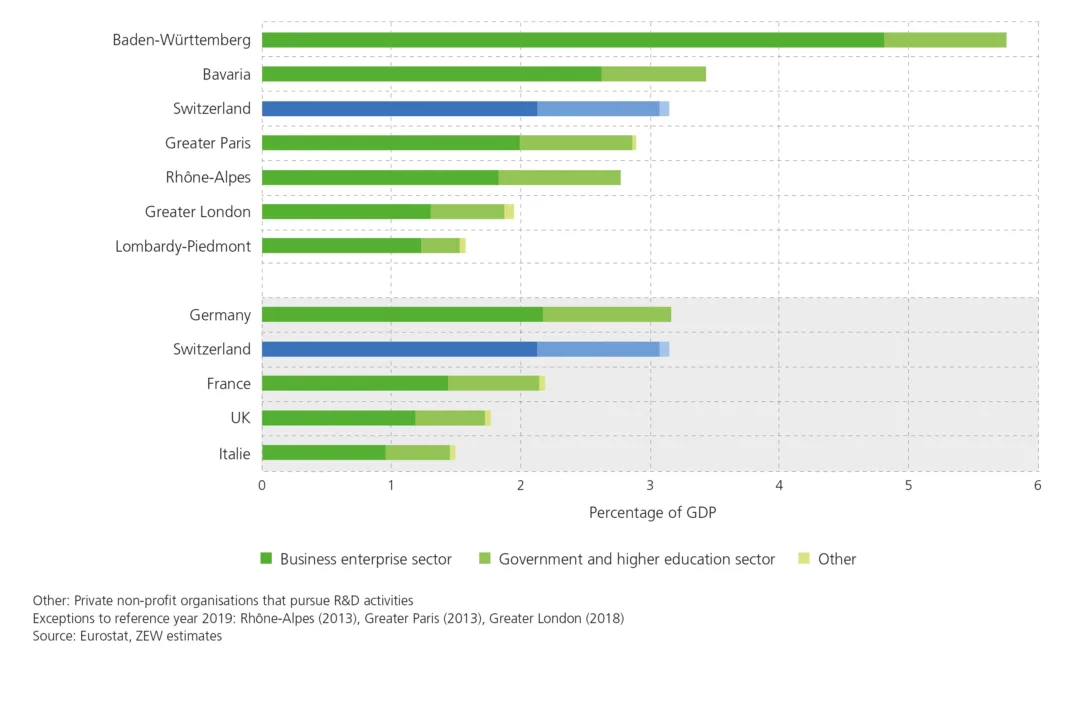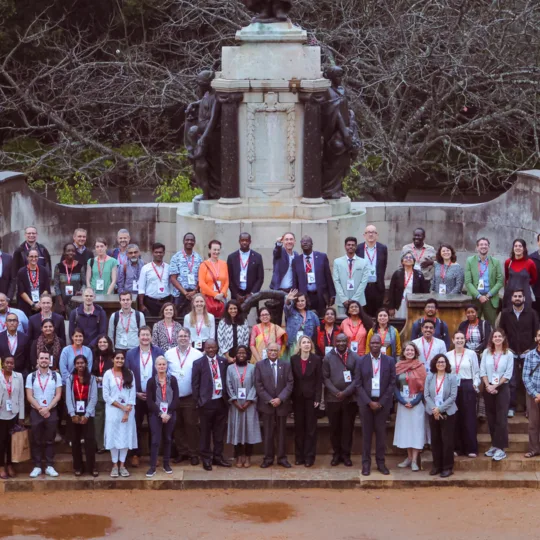International comparison of Swiss research and innovation activities
Swiss research and innovation activities are internationally competitive. This is confirmed by SERI's 2022 Interim Report 'Research and Innovation in Switzerland', which compares Switzerland with selected countries worldwide as well as with various innovation metropoles in Europe. Nevertheless, there are also a few challenges that need to be kept in sight.

The 2022 Interim Report 'Research and Innovation in Switzerland' compares countries and innovative metropoles based on a range of indicators. The first part of this report contains a description of the Swiss research and innovation system (R&I system), summarising its key features and strengths. For example, two-thirds of all R&D activities in Switzerland are funded and carried out by the private sector. This includes mostly large-sized enterprises, but also small and medium-sized ones. Swiss strengths include, for example, the differentiated education system offering both vocational and academic training opportunities, efficient public sector funding of R&I activities as well as stable policies and regulatory framework.
Comparison with selected countries worldwide
In the country comparison (China, Germany, France, Israel, Italy, the Netherlands, Austria, Sweden, Singapore, South Korea, USA, United Kingdom), Switzerland is far ahead with regard to several indicators. For example, it scores well to very well in terms of general regulatory framework (e.g. digital competitiveness, tax burden on companies), proportion of tertiary-level qualification among the 25-34 age group, ratio of publications and patents per million inhabitants and in terms of new business ventures in the services sector.
Switzerland performs less well, however, when it comes to online government services, the proportion of patent applications relating to information, communication and environmental technologies, as well as in terms of market innovations in industry.
Individual results are explained in greater detail below.
Women in research
It is worth noting that in an international comparison in 2019, Switzerland had a high proportion (36%) of women among the total number of researchers (Fig. 1). However, the proportions of women decrease in direct correlation with increasing career levels. In 2020, women accounted for 54% of Bachelor's degree holders, 53% of Master's degree holders, 47% of recent PhD holders and 26% of those holding the highest level of employment (Level A: Professorships or managerial staff). This is a perfect illustration of the 'leaky pipeline' phenomenon: the higher the academic position, the lower the proportion of women and the higher the proportion of men (Figure 2). In recent years, however, there has been an increase in the proportion of women holding Level A positions; 2015: 22%; 2017: 24%).


International networking activities
International networking is particularly important for research and innovation stakeholders based in a small country such as Switzerland. Switzerland performs well in the relevant indicators (e.g. success rate of project proposals under Horizon 2020, share of publications and patent applications resulting from international collaboration, share of foreign students). In the future, too, special attention must be paid to international openness and networking at the bilateral and multilateral level.
Comparison with innovative metropoles in Europe
The comparison of six innovative metropoles of similar size to Switzerland serves as a complement to the country comparison. The metropoles considered are the two German states of Baden-Württemberg and Bavaria, the Italian region of Lombardy-Piedmont, the two French regions of Rhônes-Alpes and Île-de-France (Greater Paris), and Greater London.
The metropole comparison confirms Switzerland's strong position. However, it performs less well than in the corresponding country comparison. For example, Switzerland compares less well with innovative metropoles in terms of the large number of scientific publications (period 2018-2020) and number of patents (period 2017-2020) per inhabitant. Nevertheless, Switzerland still comes out on top here as well.
In terms of R&D intensity (R&D expenditure as a percentage of GDP), Switzerland also performs significantly worse in the metropole comparison than in the country comparison. In 2019, for example, Baden-Württemberg's R&D intensity was nearly twice as high as Switzerland's (Figure 3).

Conclusion and outlook
There have not been any significant changes in the international positioning of Swiss R&D activities reported in the long version 2020 'Research and Innovation in Switzerland' and the 2022 interim report. Switzerland continues to compare favourably with countries and metropoles that are heavily focused on research and innovation.
In order to remain internationally competitive in the future, Switzerland must continue to nurture the strengths of its R&I system, such as its differentiated education system with both vocational and academic training pathways as well as its efficient approach to R&I funding and its stable policy and regulatory framework. It must also remain attentive to various challenges: In particular, involvement of national R&I stakeholders in national and international cooperation programmes must be maintained and encouraged. For a small country like Switzerland, international networking and cooperation are crucial. They enable Swiss researchers to gain access to critical international infrastructures and networks that bring scientific, technological and economic benefits to all countries involved.
‘Research and Innovation in Switzerland’ report
The report 'Research and Innovation in Switzerland' (R&I report) highlights the effectiveness of Swiss research activities and helps to improve our understanding of the Swiss R&I landscape. The findings in this report are used as a basis for preparation of the Federal Council's four-year dispatches on the promotion of education, research and innovation.
This report was published for the first time in 2016 and for the second time in 2020. The 2022 edition is an interim report. As such, it is significantly shorter than the long versions from 2016 and 2020. After this publication, the concept and content of future R&I reporting will be analysed and adjusted.
The R&I Report is intended for policymakers and government officials responsible for managing the ERI system. The target audience also includes R&I funding institutions, education institutions and all interested individuals, organisations and companies in Switzerland and abroad. The report can be ordered on the SERI website.
Contact
Author



